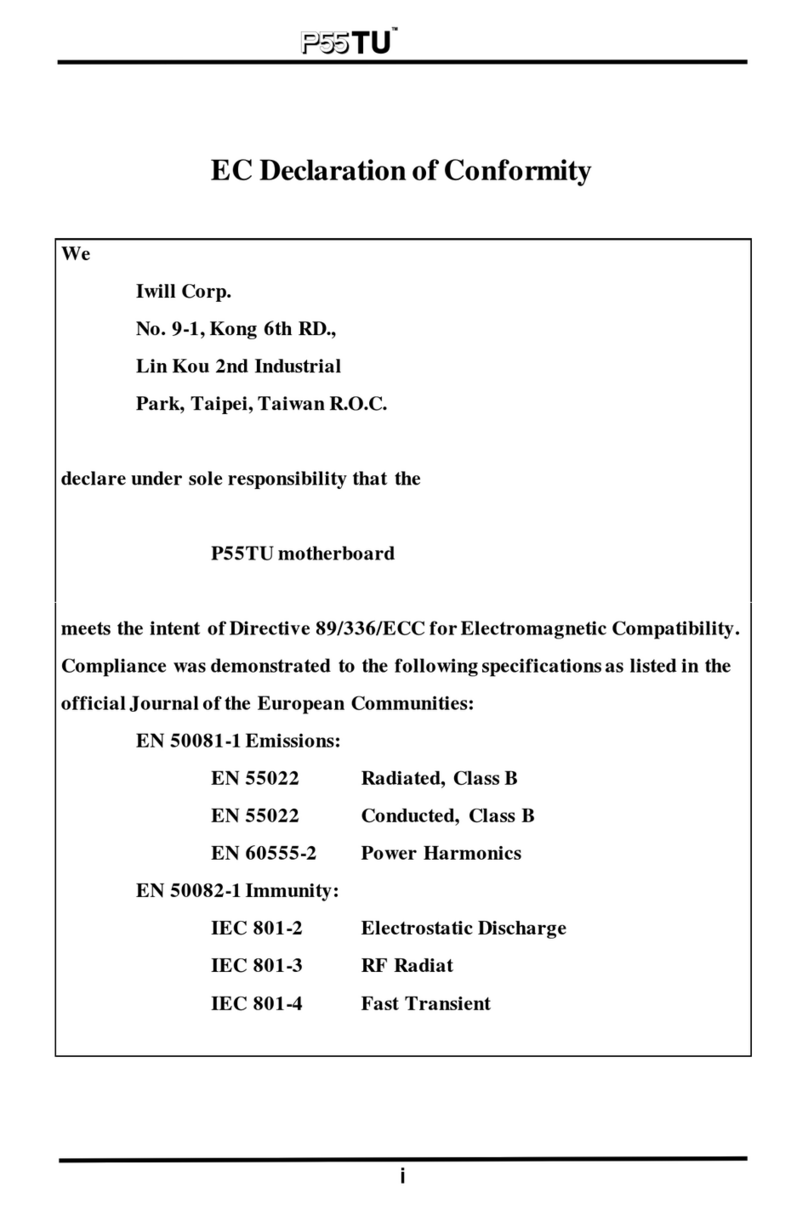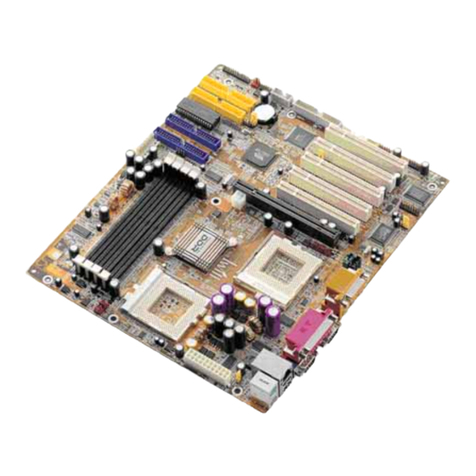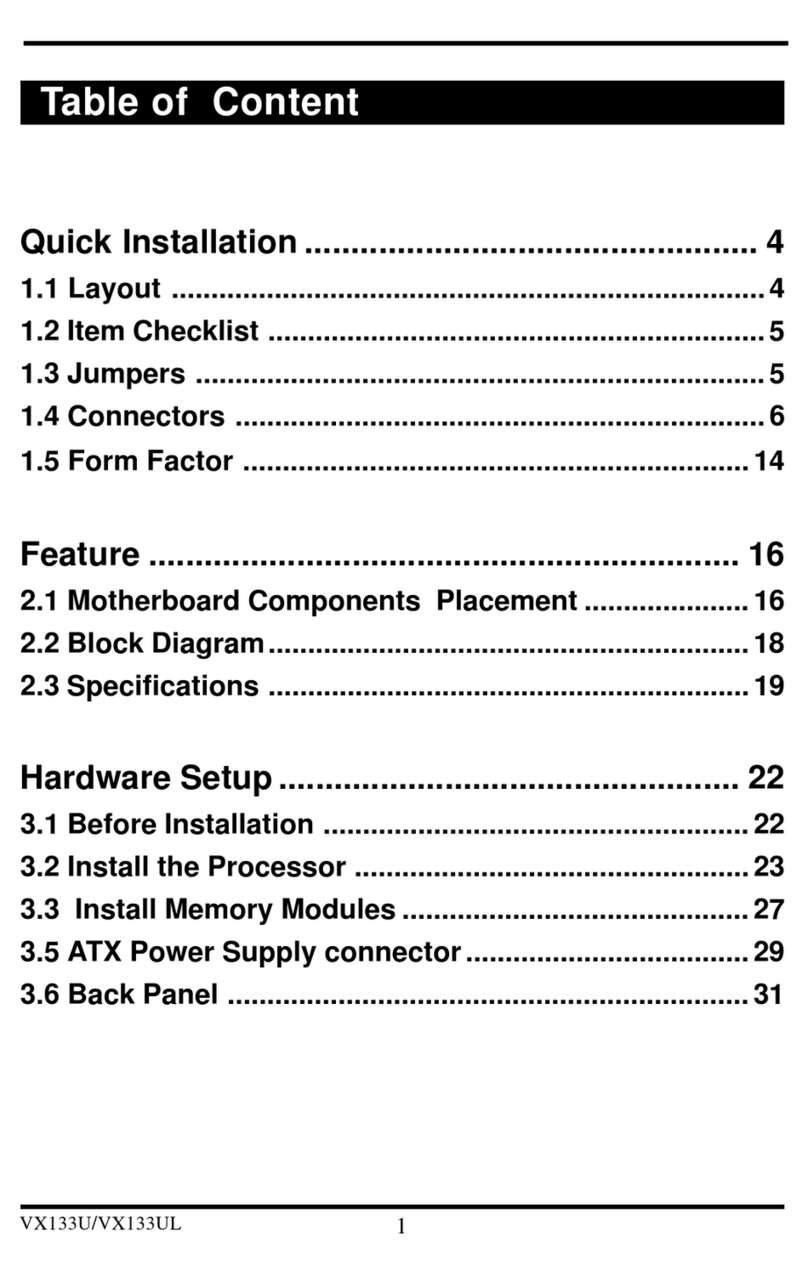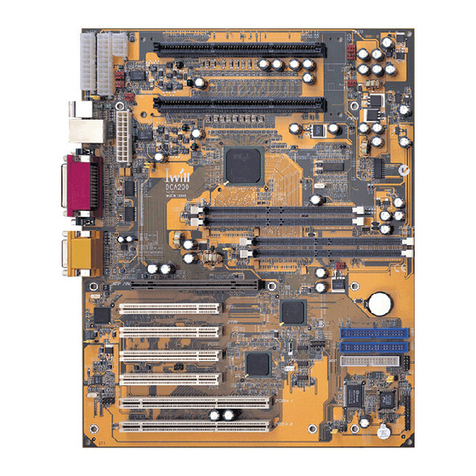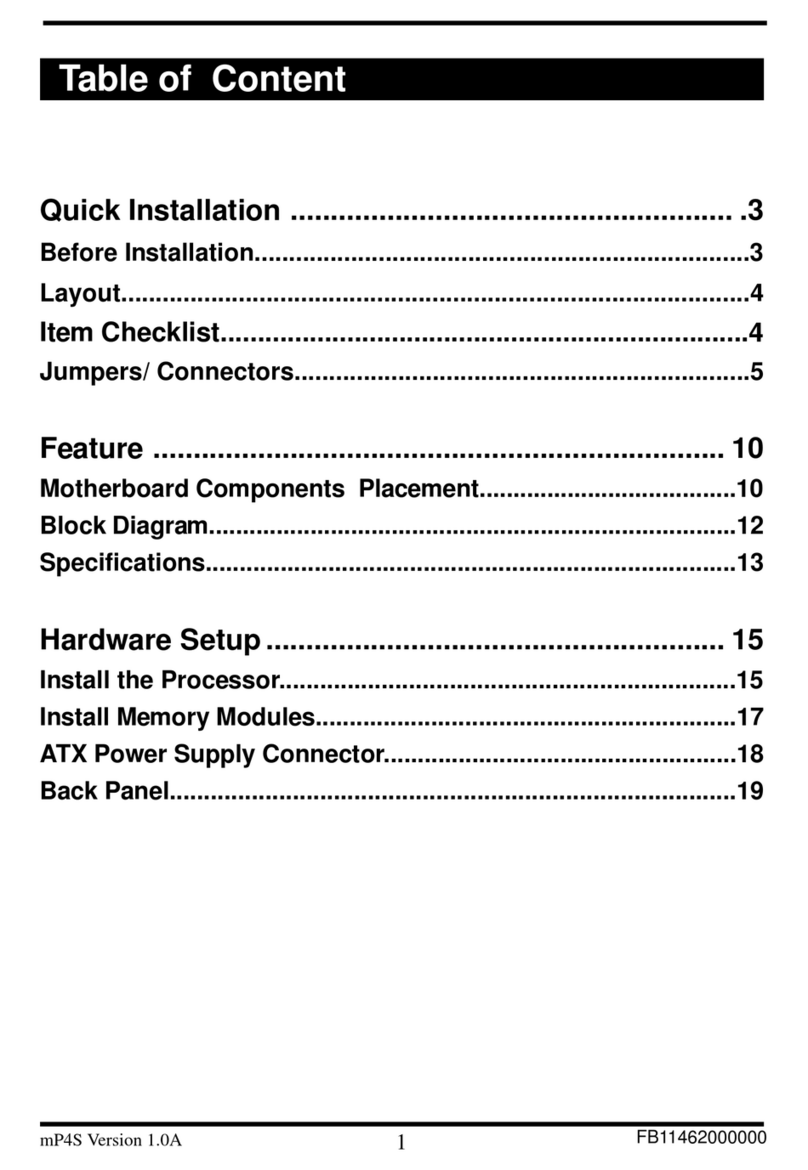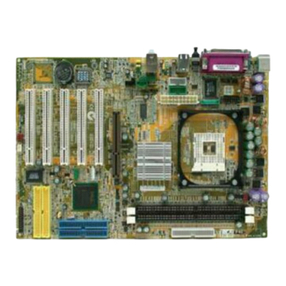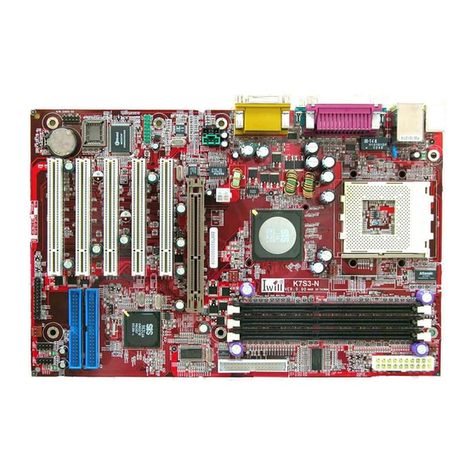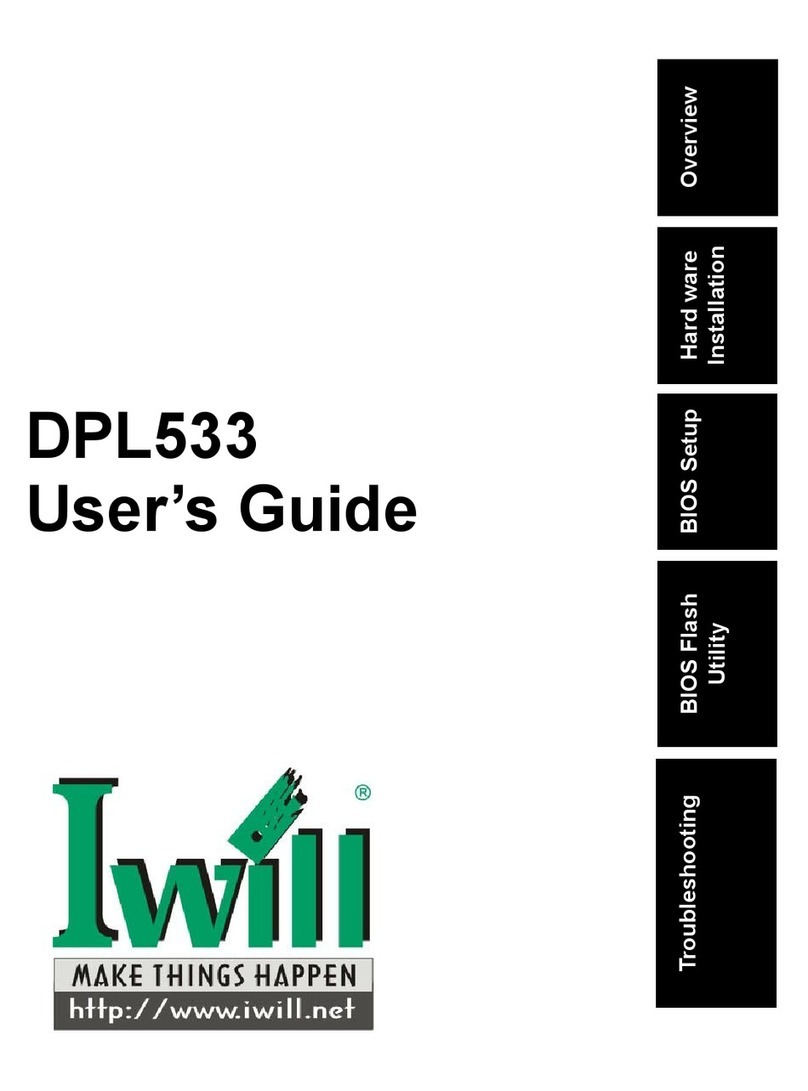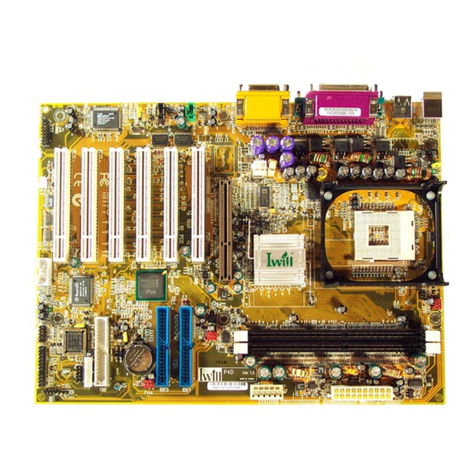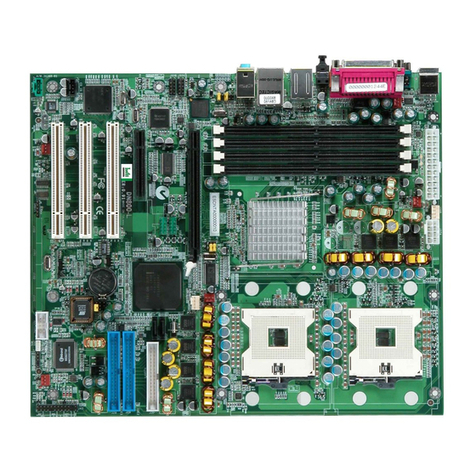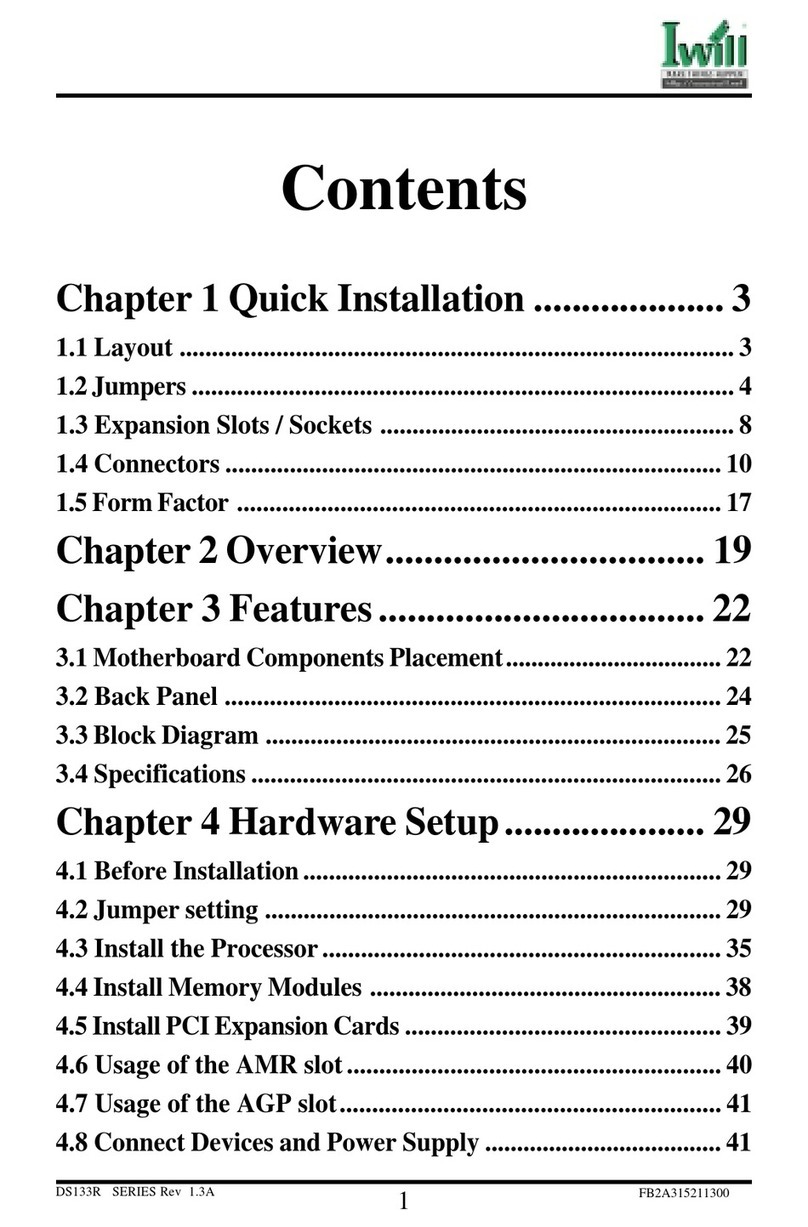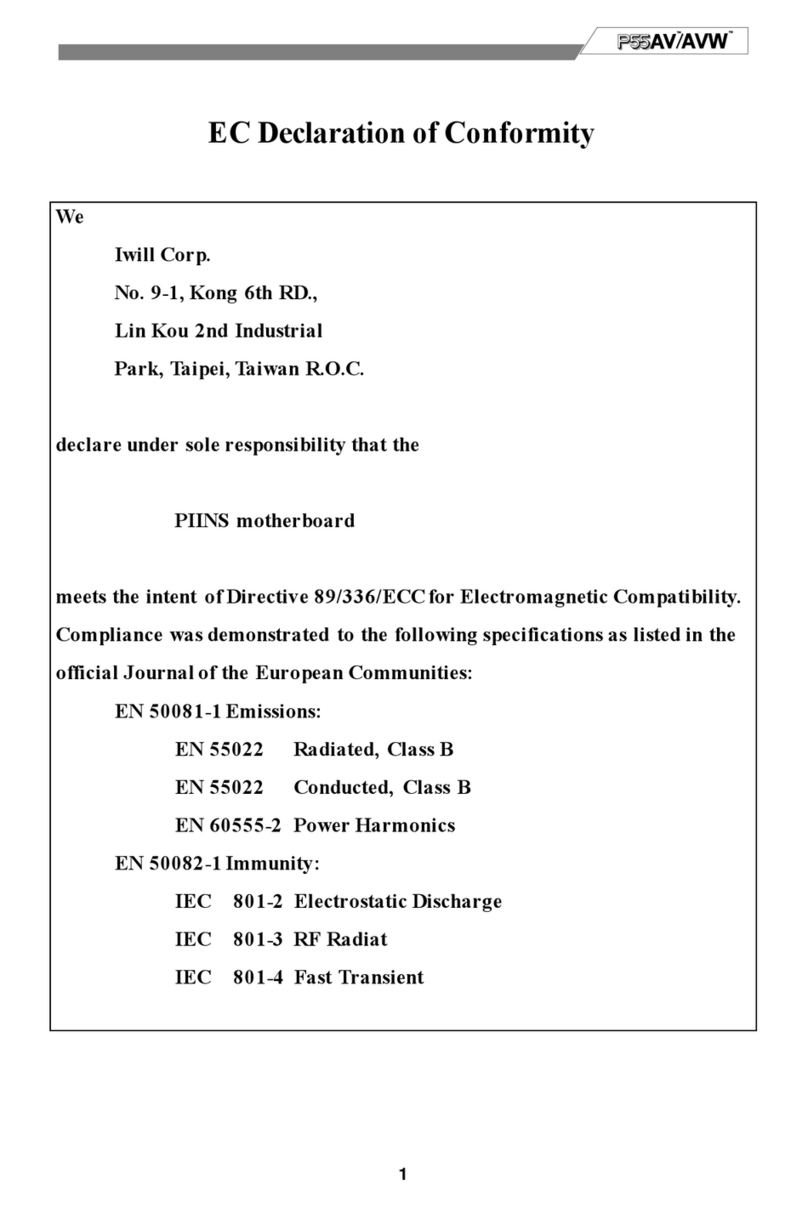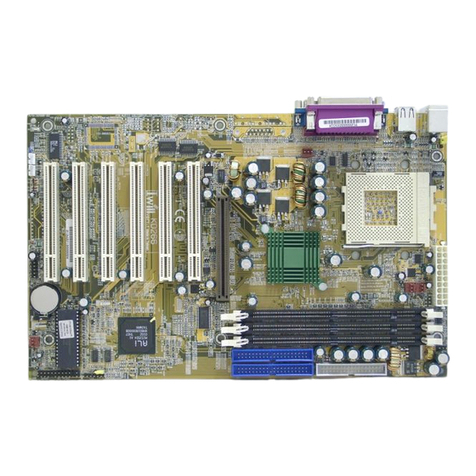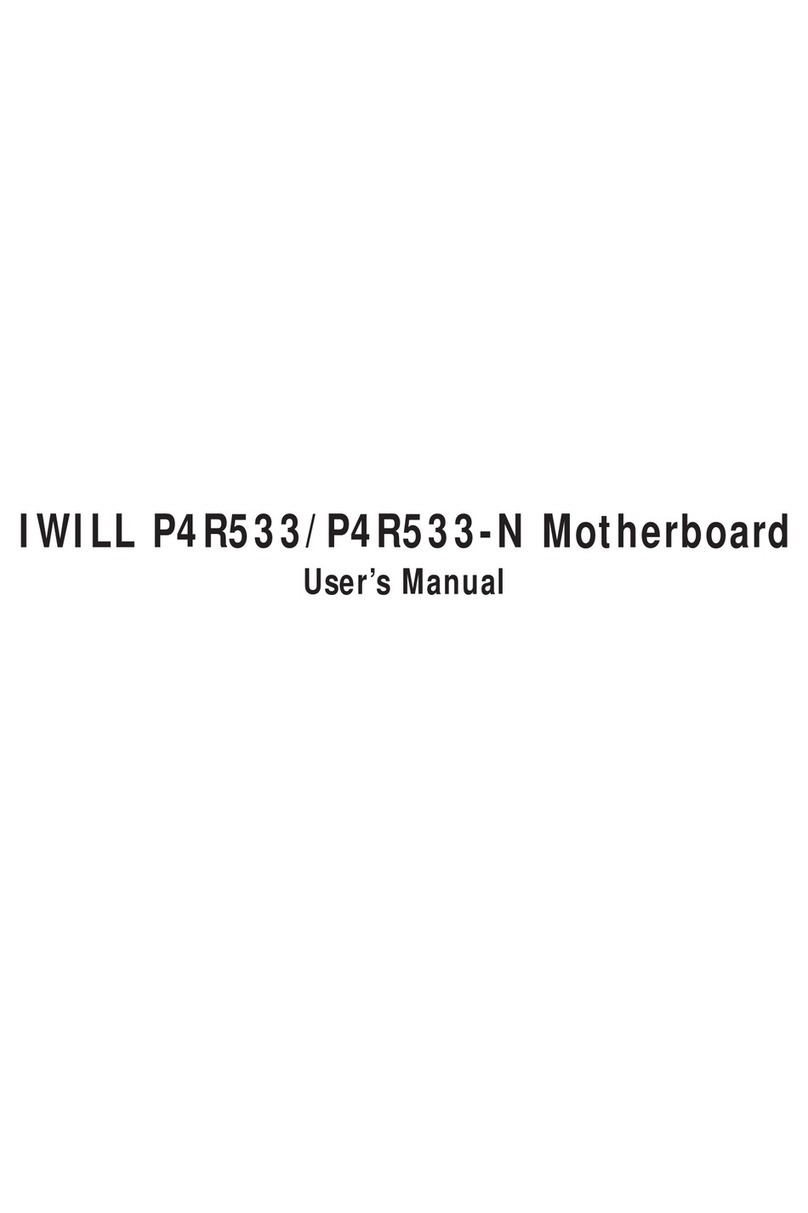P4G Series Motherboard
○○○○○○○○○○○○○○○○○○○○○○○○○○○○○○○○○○○○○○○○○○○○○○○○○○
User’s Manual VII
○○○○○○○○○○○○○○○○○○○○○○○○○○○○○○○○○○○○○○○○○○○○○○○○○○
Installing The Processor...............................................................4.3
Installing the Heatsink................................................................4.5
Installing System Memory ...............................................................4.8
Memory Specifications.................................................................4.8
Memory Configuration Options ......................................................4.8
Installing Memory Modules...........................................................4.9
System Memory Recognition .......................................................4.10
Installing the Motherboard in a System Housing...............................4.11
Motherboard Installation Procedure .............................................4.11
Connecting Front Panel Components ............................................4.13
Completing System Configuration...................................................4.13
5: System Configuration ....................................................... 5.1
Installing or Connecting Internal Peripherals .................................... 5.1
Installing an AGP Card....................................................................5.2
AGP Configuration ......................................................................5.2
Display Drivers...........................................................................5.2
Connecting Internal Devices ............................................................5.3
Connecting IDE Devices to the Main IDE Connectors..........................5.3
Connecting a Floppy Disk Drive......................................................5.4
Connecting a Smartcard or MS/SD Reader........................................5.4
Multiple Drive Configurations........................................................5.6
Alternate Drive Controller Boot Device Settings ................................5.7
Connecting External System Peripherals............................................ 5.8
Connecting a Display Monitor ..........................................................5.8
Connecting a Keyboard & Mouse.......................................................5.8
Configuring the CMOS Setup Utility ................................................ 5.10
The CMOS Setup Utility User Interface............................................. 5.10
Running the CMOS Setup Utility ..................................................5.10
CMOS Setup Utility Program Sections ..............................................5.12
Standard CMOS Features ............................................................5.14
Advanced BIOS Features ............................................................5.15
Advanced Chipset Features.........................................................5.16
Integrated Peripherals...............................................................5.17
Power Management Setup .......................................................... 5.19
PnP/PCI Configurations.............................................................5.20
PC Health Status......................................................................5.21
IWILL Smart Setting .................................................................5.22
Load Fail-Safe Defaults..............................................................5.23
